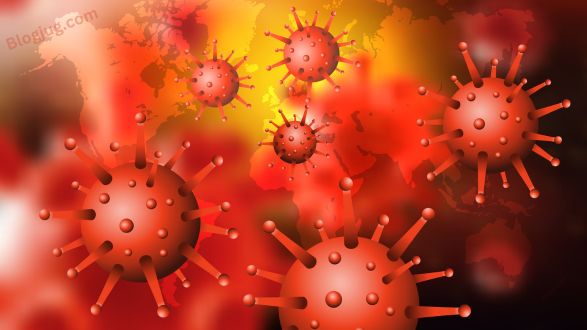
Overview
What are Infectious Diseases?
Infectious diseases are disorders caused by bacteria, viruses, fungi, and parasites, among other creatures. Numerous species can be found living within our bodies. They’re usually neither dangerous nor even helpful. But in some circumstances, some microorganisms have the capacity to spread disease.
Certain infectious diseases have the potential to spread from person to person. Certain ones are spread by animals or insects. Additionally, if you come into contact with organisms in the environment or consume tainted food or water, you could contract others.
The signs and symptoms of the sickness can vary depending on the organism causing it, although fatigue and fever are common. Certain infections that are not life-threatening may be treated at home with rest and home treatments, but others may require hospitalization.
Vaccination is a preventive measure against many infectious diseases, including chickenpox and measles. Regular and thorough hand washing also aids in preventing the majority of infectious infections.
What are the symptoms of infectious diseases?
Every infectious disease has distinct symptoms that are unique to it. Several infectious diseases have general signs and symptoms, which include:
1. Fever.
2. Muscle aches.
3. Coughing.
4. Diarrhea.
5. Fatigue.
When to see a doctor
Seek medical attention if you:
1. Are you having difficulty breathing.
2. I’ve had a cough for almost a week.
3. Experiencing a strong headache and fever.
4. Get a rash or swelliness.
5. Possess a persistent or mysterious fever.
6. Experience sudden visual issues.
7. have suffered an animal bite.
What causes infectious diseases?
Infectious diseases can be caused by:
1. Bacteria: Illnesses as TB, strep throat, and urinary tract infections are caused by these single-celled organisms.
2. Viruses: Viruses, which are even tinier than bacteria, are the cause of numerous illnesses, from AIDS to the common cold.
3. Fungi: Fungi are the source of many skin conditions, including athlete’s foot and ringworm. Your nervous system or lungs may become infected with other kinds of fungus.
4. Parasites: A microscopic parasite that is spread by mosquito bites is the cause of malaria. Humans may contract other parasites from animal excrement.
Direct contact
Contact with an infected person or animal is one of the easiest ways to contract most infectious diseases. Direct contact can result in the spread of infectious diseases like:
1. Person to person: The direct transmission of bacteria, viruses, or other germs from one person to another is a typical way for infectious diseases to spread. This may occur when a person who carries the virus or bacteria contacts, kisses, coughs, or sneezes on an uninfected person.
Additionally, through the exchange of bodily fluids during intercourse, these microbes might proliferate. The individual who spreads the pathogen may only be a carrier and not exhibit any signs of the illness.
2. Animal to person: Being bitten or scratched by an infected animal — even a pet — can make you sick and, in extreme circumstances, can be fatal. Managing animal excrement can also present risks. For instance, cleaning out your cat’s litter box can expose you to toxoplasmosis.
3. Mother to unborn child: It is possible for a pregnant mother to transmit infectious disease-causing bacteria to her fetus. Certain bacteria can travel through breast milk or the placenta. During childbirth, germs from the vagina might potentially be passed to the infant.
Indirect contact
Indirect touch can potentially spread disease-causing organisms. An inanimate object like a tabletop, doorknob, or faucet handle can harbor a lot of germs.
You can catch germs from someone who has the flu or a cold, for example, if you touch a doorknob they handled. Before washing your hands, you run the risk of being sick if you subsequently touch your mouth, nose, or eyes.
Insect bites
Certain bacteria rely on insects like ticks, fleas, lice, and mosquitoes to spread from host to host. We refer to these carriers as vectors. Mosquitoes can transmit the West Nile virus or the malaria parasite. The bacteria that causes Lyme disease may be carried by deer ticks.
Food contamination
Contaminated food and water can also harbor pathogenic microorganisms. This mode of transmission makes it possible for germs to propagate from one source to numerous recipients. A bacteria called Escherichia coli (E. coli), for instance, can be found in or on some meals, such as raw fruit juice or undercooked hamburgers.
What are the Risk factors of Infectious Disease?
Even though infectious diseases can infect anyone, if your immune system isn’t functioning properly, you may be more susceptible to illness. This could happen if:
1. You’re on anti-rejection meds for a transplanted organ, steroids, or other immune-suppressive medications.
2. You have HIV or AIDS.
3. You suffer from certain cancers or other immune system-related conditions.
Furthermore, a number of additional medical factors, such as malnutrition, advanced age, and implanted medical devices, may make you more susceptible to infection.
Complications
The majority of infectious diseases only cause small side effects. However, some diseases can become fatal, including meningitis, AIDS, and pneumonia. A few different infection kinds have been connected to a persistently elevated risk of cancer:
1. Cervical cancer has been linked to human papillomavirus.
2. Peptic ulcers and stomach cancer are associated with Helicobacter pylori.
3. Liver cancer has been associated with hepatitis B and C.
Furthermore, some infectious diseases may go quiet for a while before resurfacing years or even decades later. For example, shingles might appear much later in life in a person who has had chickenpox.
Prevention
To lower your risk of illness, heed these tips:
1. Wash your hands: This is particularly crucial before and after cooking, eating, and using the restroom. Additionally, avoid using your hands to contact your mouth, nose, or eyes as this is a typical way for germs to enter the body.
2. Get vaccinated: Being vaccinated can significantly lower your risk of catching a variety of illnesses. Ensure that both you and your children have received the appropriate immunizations on time.
3. Stay home when ill: If you are experiencing diarrhea, vomiting, or a fever, Don’t go to work. If your child exhibits any of these symptoms, don’t send him or her to school either.
4. Prepare food safely: When making meals, keep the counters and other surfaces in the kitchen clean. To make sure that food is cooked to the proper temperature, use a food thermometer. This translates to at least 160 F (71 C) for ground meats, 165 F (74 C) for poultry, and at least 145 F (63 C) for the majority of other meats.
Also promptly refrigerate leftovers, don’t let cooked foods shouldn’t be left out at room temperature for extended periods of time.
5. Practice safe sex: If you or your partner have a history of high-risk behavior or STDs, you should always use condoms.
6. Don’t share personal items: Avoid sharing drinking glasses or dining utensils.
7. Travel wisely: See your doctor about any necessary immunizations, such as those for cholera, hepatitis A or B, typhoid fever, yellow fever, or cholera, if you’re planning a trip abroad.









4 thoughts on “Infectious Disease: Types, Causes & Treatments”